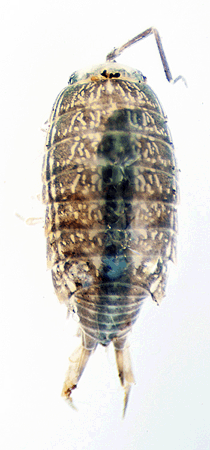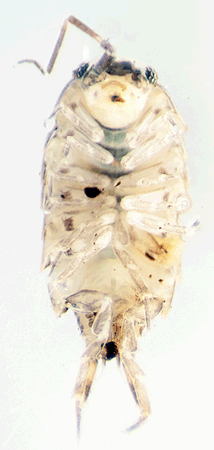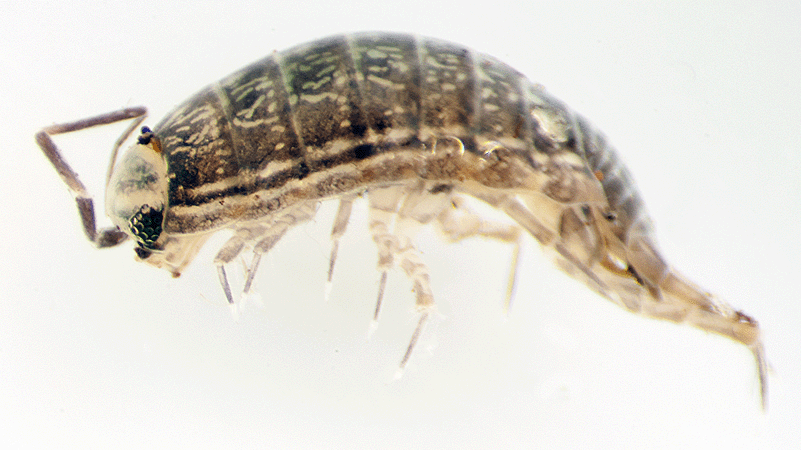Class Malacostraca in the Christopher B. Smith Preserve
Class Malacostraca Characteristics: Class Malacostraca is the largest class of the six classes of crustaceans. There are more than 25,000 species of malacostracans. Species include crabs, lobsters, shrimp, woodlice, amphipods, and mantis shrimp. Some are marine, while others live in freshwater or are terrestrial. Most are scavengers; some are filter feeders and some are carnivores. Most have a 5-segmented head, an 8-segmented thorax and an 6-segmented abdomen. The thoracic segments may be fused with the head to form a cephalothorax. Each body segment has a pair of jointed appendages. The class name, "Malacostraca" is derived from the Greek words "malakos" meaning "soft" and "ostrakon" meaning "shell." Malacostracans have soft shells immediately after they moult.
The head has two pairs of antenna and a pair of stalked compound eyes. Most species have distinct sexes. Each thoracic appendage has a gill. There is usually a metamorphosis between the larval and adult form.
Interactions in the Smith Preserve: Two malocostracans have been photographed in the Preserve, Caridea shrimp and sow bugs. Shrimp are omnivores, eating both plants and animals. They are preyed upon by fish and wading birds. Sow bugs are detritivores, eating dead plant matter. Sow bugs help produce compost, mix soil, and provide food for insectivores.

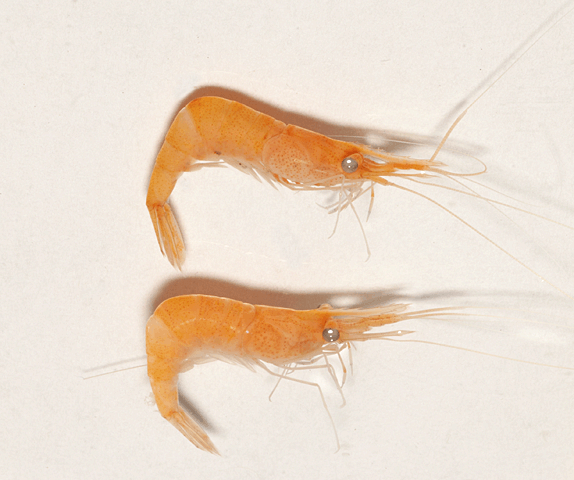 Palaemonetes paludosus live in fresh water and brackish water. They are nocturnal and remain hidden in vegetation during the day, becoming active foragers at night. The specimens shown in the first 3 photographs were living in the freshwater pond at the Christopher B. Smith Preserve. They were captured in dipnet samples on November 19, 2013.
Palaemonetes paludosus live in fresh water and brackish water. They are nocturnal and remain hidden in vegetation during the day, becoming active foragers at night. The specimens shown in the first 3 photographs were living in the freshwater pond at the Christopher B. Smith Preserve. They were captured in dipnet samples on November 19, 2013. 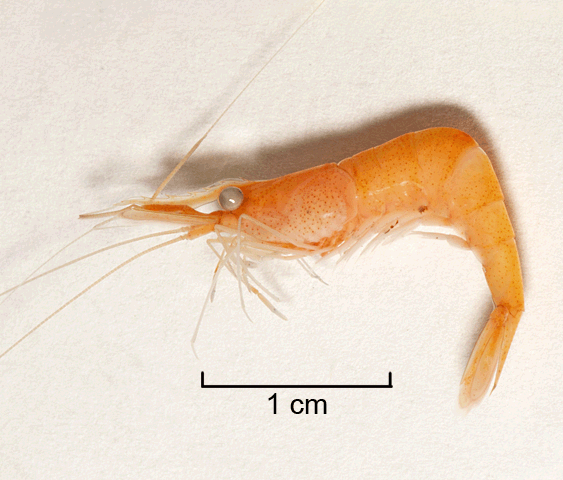 When alive, these shrimp have transparent bodies. Upon dying, the carapace (outside shell) becomes orange and translucent.
When alive, these shrimp have transparent bodies. Upon dying, the carapace (outside shell) becomes orange and translucent. 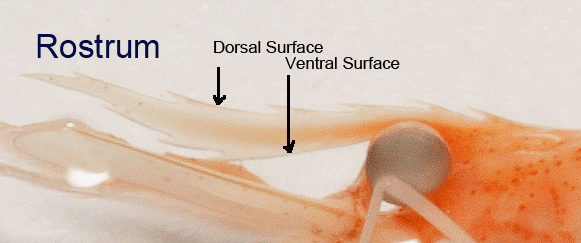
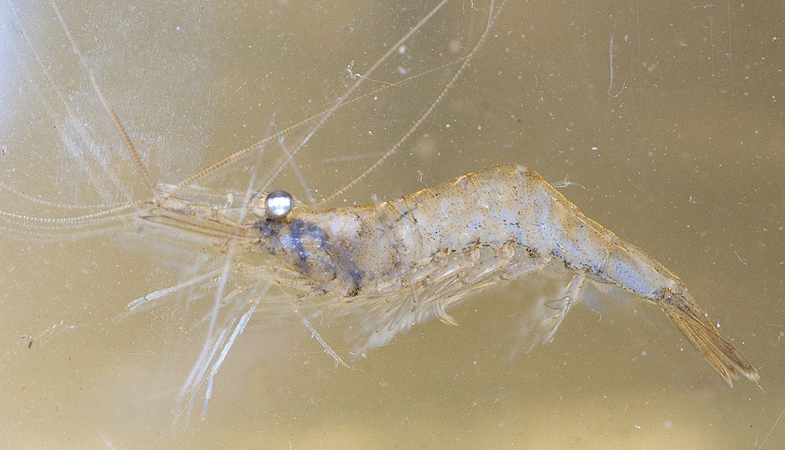

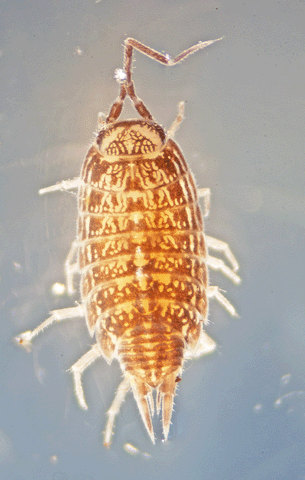
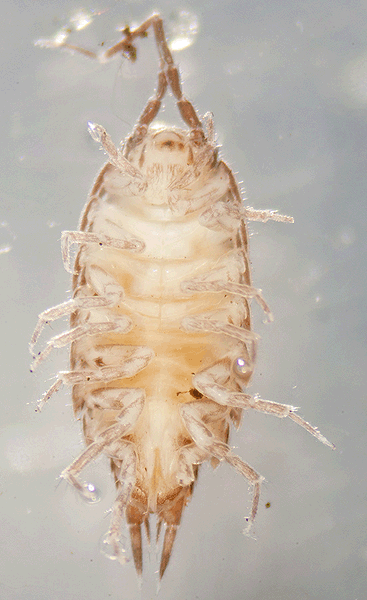 The individual shown in the first three photographs was captured in a pit trap placed under a laurel oak tree just north of Smith Preserve Way on November 17, 2015. The sow bug was 4 mm long. Other individuals were also collected in the sample, but they were smaller. These photographs were submitted for identification on November 24, 2015 to <BugGuide.net>, sponsored by Iowa State University Department of Entomology.
The individual shown in the first three photographs was captured in a pit trap placed under a laurel oak tree just north of Smith Preserve Way on November 17, 2015. The sow bug was 4 mm long. Other individuals were also collected in the sample, but they were smaller. These photographs were submitted for identification on November 24, 2015 to <BugGuide.net>, sponsored by Iowa State University Department of Entomology. 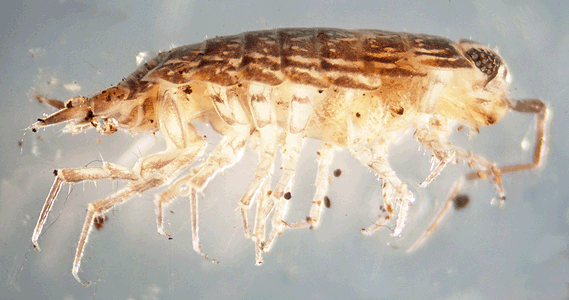 Sow bugs feed on fungi and bacteria that infest dead and rotting vegetation. They are eaten by insectivores, some of which are known to prey exclusively on woodlice. Examples include spiders of the genus Dysdera and land planarians.
Sow bugs feed on fungi and bacteria that infest dead and rotting vegetation. They are eaten by insectivores, some of which are known to prey exclusively on woodlice. Examples include spiders of the genus Dysdera and land planarians. 